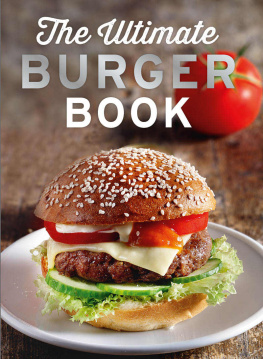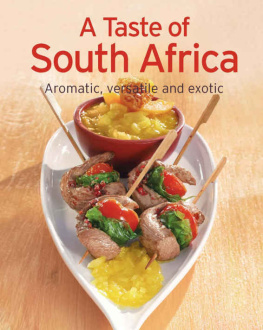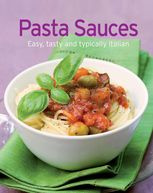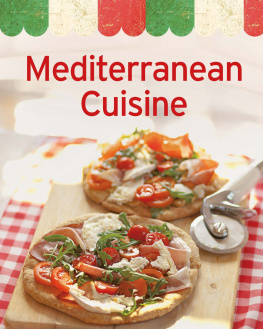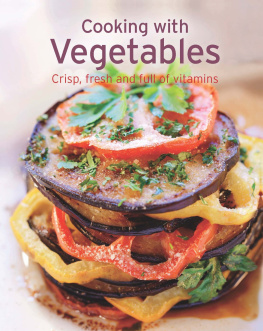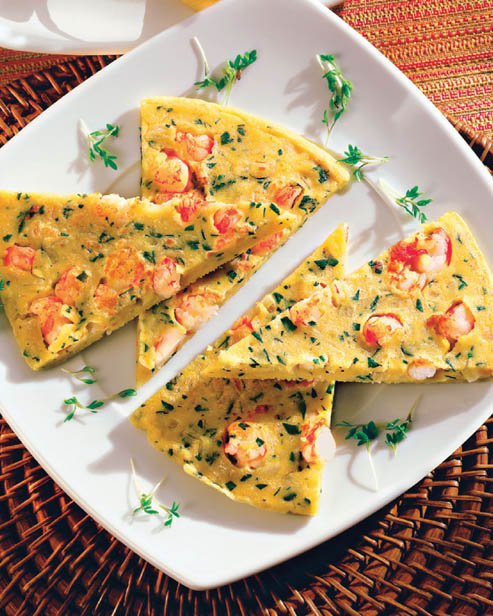Contents
Tapas Tapas are firmly established within Spains food culture whether enjoyed as an appetiser with a glass of wine, standing at the bar or as a wide selection of dishes prepared for an evening meal. Moreover, Tapas stand for a zest for life, vivacity and an informal style of conviviality, and are becoming increasingly popular to make at home. Our quick, simple and delicious recipes for meat, fish, poultry, vegetables and eggs bring a Mediterranean holiday flavour to your table, and they are sure to inspire. Tapas Naumann & Gbel Verlagsgesellschaft mbH
a subsidiary of VEMAG Verlags- und Medien Aktiengesellschaft
Emil-Hoffmann-Strae 1, 50996 Cologne (Germany)
www.vemag-medien.de
Recipe photographs: TLC Fotostudio
Cover photograph: StockFood/M. O. Finley
Translation from German: Vivien Groves, in association with First Edition Translations Ltd, Cambridge
Complete production: Naumann & Gbel Verlagsgesellschaft mbH
All rights reserved
ISBN 978-3-8155-8765-2
One tapa is never enough Tapas bar counters are well stocked with a plentiful selection of individual bowls and platters, containing a wide variety of small snacks and delicious titbits.
These little appetisers are so tempting that it is impossible to resist sampling them. Traditionally, tapas comprise any little dish which serves to bridge the gap between lunch and dinner. There are various legends surrounding the origin of tapas. According to one theory, they were invented by a 13th-century Spanish king, Alfonso X, during a period of illness. The story goes that while he was ill, he was only able to manage small bites of food with a little wine. When he recovered, he ordered that henceforth no wine should be served in Spain unless accompanied by a small snack.
This story, however charming, is probably rather implausible. Other sources, meanwhile, maintain that tapas first evolved among farm workers and other labourers. It is said that the heavy, manual work in which they were involved necessitated a steady supply of small snacks throughout the day to keep them going, thereby avoiding the need to stop for a proper meal. The tapas culture has also been attributed to the Moorish presence in Spain. The custom of diners sharing and enjoying a selection of small dishes together is, after all, a familiar feature of North African food culture. Whatever the origin of tapas, a rapid increase in the number of taverns marked the dawning of the age of the tapas culture.
From then on, any jugs or glasses of drink were covered with a slice of bread, smoked ham or cheese, which served to prevent dust or insects falling into the beverage, and there was always something to eat whilst enjoying a glass of alcohol. These appetizing little snacks, used as lids to cover the drink, were called tapas, which simply means lids. The introduction of tapas signaled the birth of a Spanish tradition, which has meanwhile become hugely popular all over the world. Over the centuries, the enjoyment of tapas has developed into a way of life, and the range of different tapas available is considerable. Tapas are served in little dishes or on plates and then enjoyed with friends. The simplest type of tapas can also be made at home in next to no time, using ingredients that you can always have readily at hand.
It takes no more than a few minutes to assemble a collection of little dishes containing wafer-thin, sliced Serrano ham, sliced salami and chorizo sausage, mixed spiced olives, cubes of cheese, strips of red pepper and hunks of white bread.
There are countless variations on the tapas theme: there is practically no food which cannot be transformed into an attractive, little appetiser even a simple salad of sliced tomatoes, arranged on a plate, seasoned with onions and garlic, decorated with parsley and drizzled with good-quality olive oil. As an alternative, instead of serving it on a plate, the tomato salad may be arranged on small slices of toasted white bread or slices of wholesome farmhouse bread. Savour the Spanish attitude towards life with every appetiser and morsel!
Empanadillas with mushrooms and prawns
Preparation time: approx. 25 minutes (plus cooking time)
Per serving approx. 236 kcal/992 kJ
12 g P, 16 g F, 12 g CH Serves 4 1 sachet puff pastry (deep-frozen) 20 g butter 2 chopped onions 2 diced tomatoes 1 diced green pepper 250 g mixed mushrooms 1 tbsp oil salt pepper 1 hard-boiled egg 100 g pre-prepared prawns tsp chilli powder 1 egg yolk for the glaze Defrost the sachet of puff pastry.
Pre-heat the oven to 200 C (Gas Mark 6). Heat the butter and lightly fry the onions. Stir in the tomatoes and green pepper. Clean the mushrooms, and cut them a little, depending on their size. Heat the oil in a pan, and fry the mushrooms on a high heat. Season with salt and pepper.
Peel the egg, then chop into small pieces. Also chop the prawns into small pieces. Fry the egg together with the prawns. Add the chilli powder and simmer for 10 minutes, whilst stirring occasionally. Season with salt and pepper and allow to cool. Roll out the puff pastry and cut out 15 cm diameter circles.
Fill one-half of each circle with the mixture. Moisten the edges with a little water, fold and press down firmly. Glaze with egg yolk and bake for approx. 15 minutes. Tortilla with cep mushrooms
Preparation time: approx. 393 kcal/1649 kJ
11 g P, 39 g F, 2 g CH Serves 4 200 g cep mushrooms 23 tbsp garlic oil salt pepper 5 eggs 2 tbsp oil Clean the cep mushrooms and wipe with a paper towel. 393 kcal/1649 kJ
11 g P, 39 g F, 2 g CH Serves 4 200 g cep mushrooms 23 tbsp garlic oil salt pepper 5 eggs 2 tbsp oil Clean the cep mushrooms and wipe with a paper towel.
Wash the mushrooms, if necessary, and then carefully dry. Then slice the cep mushrooms and place in a bowl. Drizzle garlic oil over them and season with salt and pepper. Beat the eggs in a bowl until light and frothy. Blend in the cep mushrooms. Heat the oil slowly in a pan.
Pour in the egg and mushroom mixture and slowly allow to thicken. Reduce the heat. Using a plate, turn the tortilla over, also allowing the upper side to brown. Cut the cep mushroom tortilla into bite-sized pieces and serve warm or cold on wooden skewers. Tortillitas with prawns
Preparation time: approx. 180 kcal/760 kJ
16 g P, 4 g F, 19 g CH Serves 4 8 tbsp chickpea flour 8 tbsp flour 3 onions 250 g pre-prepared prawns 2 tbsp chopped parsley 1 tsp sea salt olive oil (for frying) Pour the flour into a bowl with 250 ml cold water and stir until a thick, smooth pancake batter is obtained. 180 kcal/760 kJ
16 g P, 4 g F, 19 g CH Serves 4 8 tbsp chickpea flour 8 tbsp flour 3 onions 250 g pre-prepared prawns 2 tbsp chopped parsley 1 tsp sea salt olive oil (for frying) Pour the flour into a bowl with 250 ml cold water and stir until a thick, smooth pancake batter is obtained.



